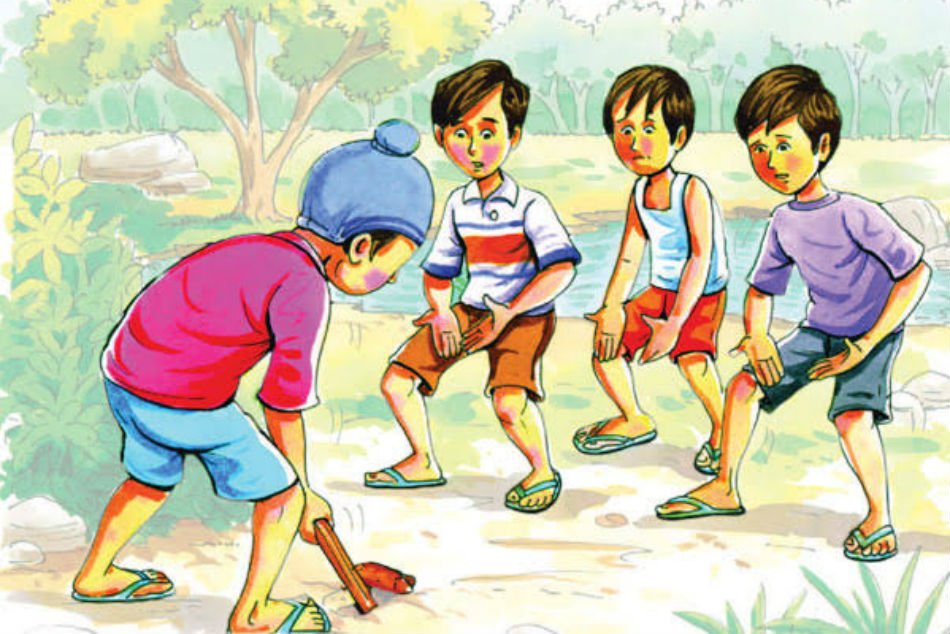By: Narvijay Yadav
While taking action against Chinese products two years ago, Prime Minister Narendra Modi called for developing Indian toys and infusing new energy into the indigenous toy industry. Now on the completion of 75 years of India’s independence, under Azadi Ka Amrit Mahotsav, the central government has taken steps to introduce 75 indigenous sports in all schools. The popular indigenous games include Gilli-danda, Posampa, Kanche, Kabaddi, Langdi, Kite flying, Sita udhar, Vish Amrit and Mardani Khel, etc. Till three decades ago, all these games were often played in villages, towns, and streets, but after the trend of the internet and social media, they all disappeared and in their place, sports like cricket, and volleyball started getting priority. Also, due to social media, children started playing online games while staying indoors, due to which outdoor games gradually vanished. The government has started making 75 Indian sports a part of school education under the Indian Knowledge System (IKS) programme. These will be implemented through physical training instructors (PTIs).
It is often seen that there is a lack of facilities and sports infrastructure in rural schools, due to which village children are unable to participate in many sports and lag behind in competitions. In view of this, the government, considering that indigenous sports do not require any infrastructure, decided to promote 75 purely Indian sports. The list of sports also includes Santhal Katti, a game similar to the popular Gilli-danda in Orissa, and a Manipuri game played with coconut, which is similar to rugby. Gilli-Danda is a 5000-years-old Indian game, which is also mentioned in Mahabharata that Lord Krishna, Arjuna, and Bhima were playing Gilli-Danda at one stance.
Global eyes on India
Many countries of the world including the US and Europe are currently suffering from the recession. The situation worsened after the Covid pandemic. The profits of all the companies the world over went down, forcing the corporates to reduce the workforce under cost-cutting efforts. Things have improved a bit now, but the slowdown continues in the West and elsewhere in the world. In such a situation, work and investment opportunities are decreasing in the US, Europe, and China, whereas it is never the case in India. Ample investment opportunities galore in India. Here the effect of recession is not as it is in the US or European nations. In fact, more than half of India’s population lives in villages and the rural economy is a significant strength of India. This is the reason why there are good investment opportunities in India for foreign companies. People in US and European countries are caught in the trap of credit cards and EMIs. This is not the case with Indians, who are reluctant to take loans and avoid the clutches of credit cards and loans too. More than 85% of India’s populace does not even invest in the stock market. In such a situation, if the stock market falls, then it does not make any significant difference to the Indian economy.
The bitter sweeteners
Punjab is considered the largest agricultural producer of the country and this state ranks on top in the country in the field of agriculture. However, the reality is that the farmers of Punjab have ruined the fertility of agricultural land by excessive use of pesticides and chemical fertilizers to increase the yield. At the same time, the amount of carcinogenic and other disease-causing elements has increased in the grains and water of Punjab, due to which not only the people of Punjab are troubled by diseases like cancer, but such diseases are spreading in other parts of the country as well. Recently, the Food Safety Standards Authority of India (FSSAI) took more than 3000 jaggeries (gur) samples from around 250 districts across the nation. The results of the investigation are surprising, as the jaggery of Punjab has been found to be the worst in the country. Talking about the quality of jaggery found in other markets of the country, 36% of the jaggery did not meet the standards.
Tripura, Uttarakhand, Andaman and Nicobar, Andhra Pradesh, Jammu and Kashmir, Telangana Sikkim, Assam, and Karnataka are the states whose jaggery was found to be fine, according to the latest report by the FSSAI. The states whose jaggery was found to be low standard are Punjab, Bihar, Arunachal Pradesh, Goa, Uttar Pradesh, Manipur, Orissa, Gujarat, and Himachal Pradesh. While Bhopal, Ranchi, Delhi, Indore, Jaipur, Pune, Siliguri, and Prayagraj are the prominent cities, jaggery was found to be of good quality. The investigating agency says that loose jaggery quality was very poor, while packaged and branded jaggery was found to be more or less fine.
The use of sugar in canned or packaged food and drinks is increasing in India. Also, saccharin is being used in the name of added sugar, which is a worrying trend. Between 2007 and 2019, a study was conducted on the use of sugar and sweeteners in packaged food and soft drinks, the report of which shows that in countries like India and China, the use of sugar to sweeten drinks has increased by more than 50%. The study found that food manufacturers adopt a dual policy, by selling high sugar and saccharin-rich foods in India while keeping the sugar content low in products exported to rich countries like the US. The side effects of sugar-free foods and drinks are also worrying. Research from Massachusetts General Hospital indicates that consuming foods or beverages that claim to be sugar-free can lead to heart diseases, and reduced eyesight and they are not at all helpful in weight loss. The chemical process used to make sweeteners like saccharin has an adverse effect on the digestive system also. They destroy the bacteria present in the intestines, killing the appetite, due to which problems like diabetes, heart disease, and obesity arise. (The author is a senior journalist and columnist)



